- While we continue to be safer at home and follow social distance protocols, we want you to know that USC PAM is here for you and we are in this together. Each month, we’ll be highlighting a member of the USC PAM community to help stay connected and share inspiration.
May 2021
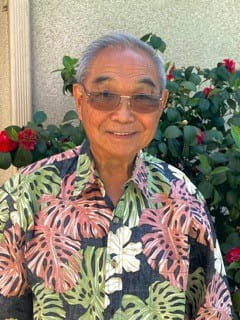
Member: Ralph Thlick MD
Resident of Santa Barbara and Sierra Madre, California
Number of years as a USC PAM member:
When was the first time you visited the USC-PAM Museum?
Although my family had been USC PAM members for over two decades, the first time I set foot in the museum was after my retirement from medical practice at Kaiser Permanente and as a clinical professor emeritus of gynecologic surgery and endocrinology from USC Keck School of Medicine. The first post retirement year I took Chinese painting class on Saturdays at the museum.
The following year (2007), I started volunteering as a docent trainee at USC PAM and Huntington Gardens, hoping to contribute something back to the community that so enriched me. These two museums compliment my longing to learn about my Chinese roots and heritage.
What benefits of membership do you appreciate the most and why?
I enjoy the camaraderie and learning from other USC PAM docents. The courtyard garden at USC PAM reminds me of our family garden in China that was over 3 acres and was surrounded by bamboo groves and a wall. It had many fruit trees: guava, pomelo, apricot, Chinese pomegranate, starfruit, and banana plants. We had two ponds: one fed by an underground river and the other fed by a nearby river stream. The large rockery was partially submerged. I was told that every summer the pond inlet was dammed up, the water was evacuated and we harvested frogs and fish that used the rockery as their homes.
Are there particular artworks, galleries or special exhibitions that are inspiring to you?
I am fascinated by the ceramics gallery. One of my interests is the evolution of different glazes used by Chinese potters.
I was intrigued by the special exhibition entitled: “Royal Taste.” It showcased the opulence and exquisite workmanship of the artifacts. The history of the Ming Dynasty is very dear to my family as the founder was the ancestral member of my clansmen, the Zhu family. It gave me impetus to do some additional research. Through several years of research looking at ancestral archives at the Mormon Church in West Los Angeles, the Chinese Benevolent Association of Los Angeles, San Francisco & Chinese Mainland, and the Chinese Genealogy Monthly Magazine in China, I was able to establish that my family tree started during the Chou Dynasty about a millennium BC located in Hobei. Later, the family migrated to Shandong Province. In 1368, the Mongolian Ruler was repelled and the Ming Dynasty was established. I was also able to discover that we had 17 generations of family in Suzhou, Hangzhou and 16 generations in Taiwan that we had never met before. These relatives were going through my genealogy search, through a very complex word designation of a long poem that showed each generation of male descendants.
Another exhibition that interested me was the “Winds from Fusang.” According to some Chinese historians, “Fusang” is the current day Mexico. The ancient Chinese map, made around the first century CE mentioned the area of “Fusang”. The exhibition explained how Mexican artists’ work influenced the Chinese mural paintings. Most of those are born from political activists. Prior to that, it was the Russians’ influence regarding class struggles and facial expression and then the Mexican influence regarding body movements.
Why do you feel art is important for yourself, other individuals, family, and communities?
Art is an expression of the feelings, longings and yearnings of the populace at that particular time/genre. Whether it is good, oppressive, benevolent, or shows happy or bad times, it reflects the society at that particular time. We can learn and read into the art as part of history.
During the stay at home order, many of us are discovering the benefits of creative outlets — like trying out new hobbies, baking, exercising, or listening to music. What is keeping you motivated right now?
During the pandemic, I have done many virtual learning seminars and Zoom meetings. I have also been cooking a lot. I have also resumed one of my favorite past times, which is listening to classical orchestral music and opera for relaxation.
What do you envision for the USC Pacific Asia Museum in the years to come?
I envision USC PAM merging the past with contemporary art platforms to form a continuum of artistic expression for generations to come.
April 2021

Member Name: Florence Baker
Resident of Glendale
Number of years as a USC PAM member: 13 Years
When was the first time that you visited the USC Pacific Asia Museum?
I first visited the Museum shortly after moving to Los Angeles to pursue graduate studies at UCLA in 1983. I’m an avid museum goer and find that one of the best introductions to a new place is its local museums. They give me a location from which to orient myself, an architectural introduction to local history, and frequently a fascinating collection to explore.
What made you decide to become a Member of the USC Pacific Asia Museum?
After moving to Glendale I came to greatly appreciate the Museum for its family focus while raising my daughter, especially its monthly events highlighting various Asian cultures. As a Professor teaching World History, I also came to rely on PAM as an important aid in expanding my knowledge of Asian history, culture and art. In 2002 I made my first visit to Asia to attend a conference in Seoul, South Korea, which proved to be the first of many visits to various regions of the continent and furthered my interest in the Museum’s collections. I had been accessing the Museum through another museum’s reciprocal program, but by 2007 I decided it was time to support the Museum more directly by becoming a member.
What benefit of Membership do you appreciate the most and why?
I appreciate being part, however small, of an institution that provides so many benefits – aesthetic, educational and social – to visitors and the local community. Having retired, I’m now a volunteer and enjoy working with and getting to know the Museum’s staff, volunteers and docents.
Are there particular artworks, galleries, or special exhibitions that are inspiring to you?
What I find especially inspiring about the Museum is its smallness in physical size and in number of art works displayed at any one time as well as the quality and scope of its collections. The smallness encourages an unhurried exploration of the galleries, while the imaginative, creative and, at times, awesome works on display have inspired me to strive to understand the cultures and artists that brought such works to life. Most often I focus on galleries exhibiting works from countries I’ve recently visited. And I’ve especially enjoyed the temporary exhibits that explore Asian Art in a global context such as Tsuruya Kōkei’s: Modern Kabuki Prints Revised and Revisited and Winds from Fusang: Mexico and China in the Twentieth Century.
Why do you feel art is important—for yourself, other individuals, families, communities?
Art works give insight into the thought, life experiences and culture of the artist or artists that fashioned them. As such, they provide an entry into a reality beyond our own individual existences, an invitation to expand our knowledge and understanding of others, and a means to link individuals, generations and communities. I find art not only expands my understanding of the world and my place in it, but also expands my ability to experience it by appealing to me in emotional or spiritual ways.
During the stay at home order, many of us are discovering the benefits of creative outlets — like trying out new hobbies, baking, exercising, or listening to music. What is keeping you motivated right now?
Staying “safer at home” has given me the opportunity to focus on projects that I’ve been neglecting. I have two years’ worth of travel photos that I’ve been researching, editing and putting in online albums. When this project makes me miss traveling too much, I turn to my needlework projects and have completed a couple of needlepoint tapestries that are now decorative pillows. I’ve also been honing my cooking and baking skills while testing new recipes inspired by my travels – much to the delight of my husband.
What do you envision for the USC Pacific Asia Museum in the years to come?
I’m excited about the work of the new administration and staff members and am looking forward to the Museum’s reopening to see what changes have been introduced. The staff has done a great job in providing online programs during the recent closure and I envision a continuation and expansion of these efforts that will increase the Museum’s profile within and beyond the local community. I also look forward to seeing an increase in visitors exploring the galleries and taking advantage of the many programs offered
March 2021

Member Name: Evelyn Davis
Resident of Glendale
Number of years as a USC PAM member: Almost 2 years
When was the first time that you visited the USC Pacific Asia Museum?
Around 2004, PAM hosted a joint meeting of the museum marketing and museum shop roundtables about online shopping platforms. After the meeting, we were invited to tour the museum galleries. I remember being amazed at seeing so many fine objects in such a small space. It was a beautiful experience.
What benefit of Membership do you appreciate the most and why?
The exclusive membership activities. Meeting and interacting with other members, some of whom are also docents. So being a member does create a “PAMily.”
Are there particular artworks, galleries, or special exhibitions that are inspiring to you?
I am drawn to textiles. I am inspired by the designs, colors, and techniques I see in the galleries. The video on weaving by one of the artists in the current special exhibition, We Are Here: Contemporary Art and Asian Voices in LA was of particular interest to me. Weaving as the first computers! I’m looking forward to more exhibitions that feature or include textiles.
Why do you feel art is important—for yourself, other individuals, families, communities?
Art unites people of different ethnicities, beliefs, and cultures. Art shows that we are more alike than we are different, and at the same time, can learn from each other. Art teaches tolerance.
During the stay at home order, many of us are discovering the benefits of creative outlets — like trying out new hobbies, baking, exercising, or listening to music. What is keeping you motivated right now?
I taught myself how to quilt. I already had some the tools, but just hadn’t started. Since I couldn’t attend in-person classes, I tuned to YouTube quilting tutorials, books, and quilting magazines. I’ve made several quilts for family and myself as well as smaller quilted projects like placemats, potholders, and tote bags. Lots of fun and takes me to another place full of creativity and tranquility.
What do you envision for the USC Pacific Asia Museum in the years to come?
I envision the museum as a center to learn about and appreciate the arts and cultures of Asians and Pacific Islanders. I would like to see USC PAM either acquire land or an existing building adjacent to or near the “Treasure House” to expand the footprint to provide additional gallery space to display more of the permanent collection and have more temporary exhibition space; create a state-of-the-art media center for presenting live and film public programming; and build a research library open to the public and scholars.
February 2021:

Member Name: Nadiya Conner
Resident of Glendora
Number of years as a USC PAM member: 4
When was the first time that you visited the USC Pacific Asia Museum?
My first visit to the Museum was for the wedding of one of my good friends in 2006. Previously, I had heard of the museum from my work at Asia Society Southern California. The Museum’s then Special Events Coordinator was a member of Asia Society.
What made you decide to become a Member of the USC Pacific Asia Museum?
I became a member because of the Southeast Asian Gallery of the museum. It was the first time in a long time that I saw artwork from Indonesia.
What benefit of Membership do you appreciate the most and why?
I appreciate the family events in the courtyard. As a mom and having worked at the Museum, I was able to see the enthusiasm my daughter had every time she visits the Museum. I remember her enjoying the colored geometric shaped magnet wall at the Ikko Style: The Graphic Art of Ikko Tanaka special exhibition in 2015.
Are there particular artworks, galleries, or special exhibitions that are inspiring to you?
The 2015-2016 special exhibition, Reshaping Traditions: Contemporary Ceramics from East Asia really inspired me. I learned how traditional ways can still be applied today. I’m also inspired by the Museum’s courtyard.
Why do you feel art is important—for yourself, other individuals, families, communities?
Art enables us to think critically, observe, reflect, and appreciate the world around us.
During the stay at home order, many of us are discovering the benefits of creative outlets — like trying out new hobbies, baking, exercising, or listening to music. What is keeping you motivated right now?
This time has given me the opportunity to be much more present with my family. I’m baking and cooking more, especially together as a family. I look forward to evening time when my daughter practices her dance steps.
What do you envision for the USC Pacific Asia Museum in the years to come?
I envision the Museum as a gathering place for the community. A place for art and also a place for the community to learn about the culture of their neighbors. The Museum is a very special place for my family as my husband and I were married in the courtyard. The Museum marked the beginning of my family.
January 2021:
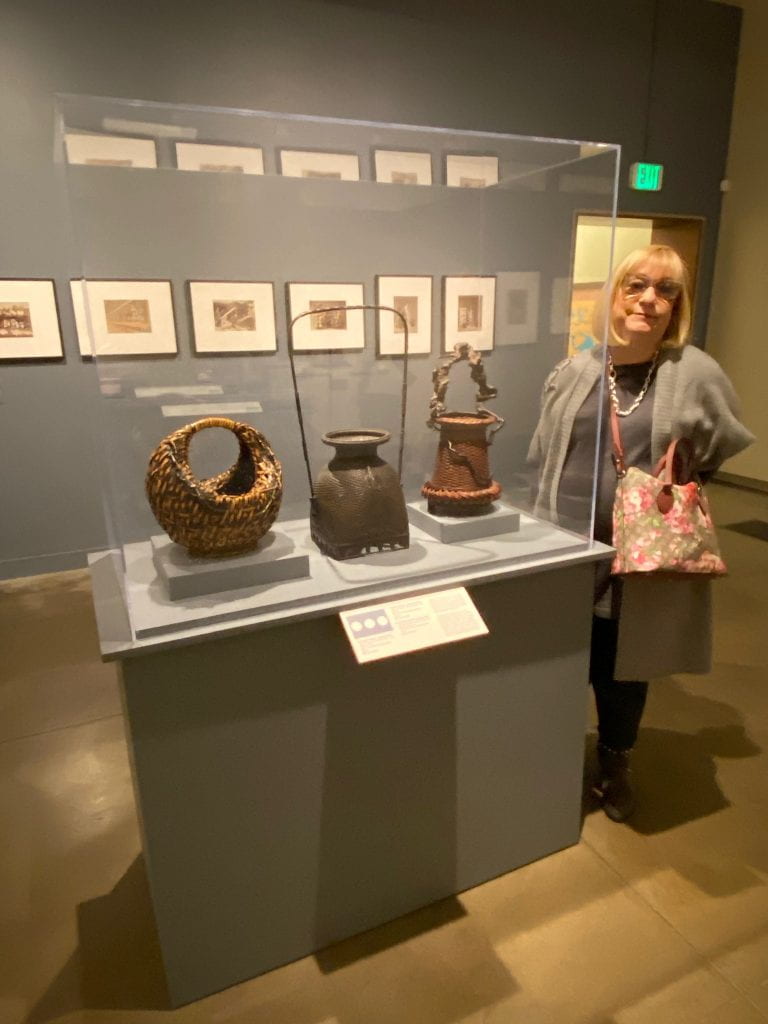
Member Name: Janice Wallace
Resident of Studio City
Number of years as a USC PAM member: 3 years
When was the first time that you visited the USC Pacific Asia Museum?
I have always been a fan of the Pacific Asia Museum having starting visiting with my aunt who lived in Pasadena for many years commencing in the 1980’s. I have attended many wonderful events here over the years from exhibitions. One of my most special memories is a Chinese dinner at the museum with Lisa See as the guest speaker. It was a very special event!
What made you decide to become a Member of the USC Pacific Asia Museum?
I have always enjoyed Asian art of all sorts and through my in-laws, Fern and Leon Wallace we became collectors of Japanese bamboo art and baskets as well as items of interest from Southeast Asia.
What benefit of Membership do you appreciate the most and why?
Becoming a member keeps me abreast of all the goings on at the museum and keeps me better connected!
Are there particular artworks, galleries, or special exhibitions that are inspiring to you?
I am always curious to see what I will learn with each new exhibit and look forward to the reopening in the not too distant future I hope!
Why do you feel art is important—for yourself, other individuals, families, communities?
Art in all forms is what makes life worth living. It gives us a way to express the beauty around us. Asian art is particularly focused on the goal in my opinion. It presents a calming beauty of nature and the world around us.
During the stay at home order, many of us are discovering the benefits of creative outlets — like trying out new hobbies, baking, exercising, or listening to music. What is keeping you motivated right now?
At the moment, I am enjoying the birth of a new granddaughter, born on New Year’s Eve. It is so important to keep engaged even as so much is shut down around us. I am also enjoying becoming reacquainted with Asian cooking! I have taken many years of Chinese cooking but now am exploring other Asian cuisines from Korea, Japan and the Philippines.
What do you envision for the USC Pacific Asia Museum in the years to come?
I hope, now that the Pacific Asia Museum is part of the USC family (of which I am a proud graduate), it will be able to increase its collection and provide many fascinating programs for people of all ages to enjoy over and over again.
Even though I hope we can come back in person soon, perhaps some of the online programming should be retained for people who are unable to travel to the museum in person.
December 2020:

Member Name: Kathy Wales
Resident of Pasadena
Member for 2 years
When was the first time that you visited the USC Pacific Asia Museum?
I first visited the USC Pacific Asia Museum in 2018. This is rather remarkable because for almost 40 years, I have lived less than a mile from the museum. For some reason, I had always thought that there was nothing of interest in the museum. After my first visit to the museum, I realized how wrong I had been and how much I had missed over the years.
What made you decide to become a member of the USC Pacific Asia Museum?
I usually become a member of a museum that I plan to visit more than once. I also support USC PAM by volunteering as a docent for student and adult tours.
Which benefits of membership do you appreciate the most and why?
Prior to the museum’s closure in March, I particularly appreciated its excellent programs – including scholarly lectures, dance performances, talks by artists and curators, and storytelling. Also, I enjoyed having a glass of wine and meeting other members at the opening of each special exhibition. Since March, I have attended interesting online programs via Zoom from the museum. For example, in the last week, I attended a virtual talk on Japanese tea ceremonies and a virtual panel discussion whose panelists included the co-founder of Black Lives Matter Los Angeles.
Are there particular objects, galleries or special exhibitions that are inspiring to you?
I am particularly interested in special exhibitions of contemporary art that provide insights into history or past or current social issues. A good example is the current exhibition of contemporary art, We Are Here: Contemporary Art and Asian Voices in LA, which provides insight into the experiences of Asian immigrants and their Asian American children. There are two things that I always do when I go to the museum. First, I sit on the bench by the koi pond and look for seasonal changes in the garden. Then, I cruise through the museum galleries to see if there are any changes to what is on display. If there is something new, I take photos and begin my research.
Why do you feel that art is important – for yourself, other individuals, families, communities?
Art gives me the joy of discovery – the wonderful moments when I suddenly stop and say “wow, look at this!” Exploring the objects in the museum or the art in a special exhibition expands my horizons, enables me to make connections and makes me more receptive to new and differing points of view. I think that this is valuable for me and would be valuable for everyone.
During the stay at home order, many of us are discovering the benefits of creative outlets – like trying out new hobbies, baking, exercising or listening to music. What is keeping you motivated right now?
I am struggling to stay motivated right now. I am spending far too much time following the news and watching Netflix. Fortunately, I was motivated to collaborate and work with other docents and museum staff in the preparation of virtual presentations about objects in the museum. Docents will share these virtual presentations with students in lieu of in-person tours of the museum. I am also motivated to take early morning walks in the Huntington Gardens.
What do you envision for the USC Pacific Asia Museum in the years to come?
I envision a courtyard full of happy people of all ages enjoying cultural events. Also, for the next few years, I envision the museum having exciting, small immersive exhibitions that will attract visitors reflecting the diversity of Southern California. Visitors who come for the experience and the selfie opportunities will then move on to see thought provoking special exhibitions of contemporary art. After that, they will meander through the galleries showing objects from the permanent collection. Here they will stumble upon things that makes them stop and look very carefully. Once this all happens, many of the visitors will post on social media about their time at the museum. Their posts will bring additional visitors, thus building the museum’s presence in the greater community.
November 2020:
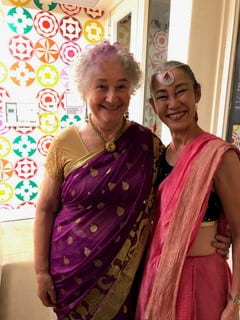
Member Name: Eiko Kubota
Resident of Pasadena
Number of years as a USC PAM member: 3
When was the first time that you visited the USC Pacific Asia Museum?
My first visit to the museum was back in 2015 when my friend encouraged me to become docent of the museum.
What made you decide to become a Member of the USC Pacific Asia Museum?
Being Japanese and having lived in Southeast Asia, the museum showcases artworks from the countries I have previously resided in, which makes me feel that I am welcomed and also nostalgic.
What benefit of Membership do you appreciate the most and why?
I have attended many special exhibition preview receptions as well as the lectures. The receptions are beautifully decorated and cheerful, and the informative and well-thought out lectures are very educational.
Are there particular artworks, galleries, or special exhibitions that are inspiring to you?
I like the Buddha statue in the Japanese gallery. I often visit that statue especially when I need to focus or calm down. Standing in front of the statue naturally lowers my stress levels.
It is very hard to choose one special exhibition I like. I was fortunate to meet some artists of some past special exhibitions including Tsuruya Kokei, Jerri Zbiral and Oscar Oiwa. USC PAM is a perfect venue to meet and speak with artists because the museum has an intimate and at-home atmosphere.
Why do you feel art is important—for yourself, other individuals, families, communities?
I think any art brings constructive conversation among people. As a USC PAM docent, I enjoy explaining the elements of tea ceremonies by show Japanese tea ceremony utensils to students and visitors. Harmony, respect, purity (being honest), and tranquility (being peaceful) are important elements to bring peace among people which we really need during these difficult times.
During the stay at home order, many of us are discovering the benefits of creative outlets — like trying out new hobbies, baking, exercising, or listening to music. What is keeping you motivated right now?
I am currently making a tapestry designed by William Morris and hope it will be done by the time the museum reopens.
What do you envision for the USC Pacific Asia Museum in the years to come?
Being a USC PAM docent, I like to make people feel inspired and surprised as well as throw in a few laughs (when possible!) while giving tours. USC Pacific Asia Museum is the best place for me to do this because it is welcoming. I am very happy to know that Bethany Montagano, USC PAM’s Director has firm direction and vision for the museum’s future.
October 2020:

Member Names: Jon and Susan Sides
Residents of Monrovia and Bedford, Wyoming
Number of years as a USC PAM member: 15 years
When was the first time that you visited the USC Pacific Asia Museum?
We scheduled a field trip for my 5th and 6th grade class. I loved the size of the museum, the galleries and the art workshop in which the students made baskets.
What made you decide to become a Member of the USC Pacific Asia Museum?
It is important to support local cultural venues and we were interested in becoming docents.
What benefit of Membership do you appreciate the most and why?
We find the lectures, gallery walks and related programming informative and stimulating. The best part, however, is being part of the Docent Council and sharing the museum with students and other visitors.
Are there particular artworks, galleries, or special exhibitions that are inspiring to you?
We have found all the temporary exhibitions to be fascinating. The scope, from Ming treasures to contemporary artists to western women creating wood block prints is stimulating. There is so much to learn!
Why do you feel art is important—for yourself, other individuals, families, communities?
Art can give us a view into the past and help us understand other cultures. With understanding, we can better appreciate and relate to the present. Enjoying the beauty of art is good for the soul.
During the stay at home order, many of us are discovering the benefits of creative outlets — like trying out new hobbies, baking, exercising, or listening to music. What is keeping you motivated right now?
With so much time at home, needed repairs and improvements were obvious, and with no excuse, we have made progress on most of those. Susan continues to explore sour dough baking. We have enrolled in several on line classes, and enjoy visiting via Zoom. Our summers involve a rural lifestyle to which chickens have been added this year. Our heirloom apple orchard is thriving.
What do you envision for the USC Pacific Asia Museum in the years to come?
We anticipate a reopening with renewed enthusiasm for the art and exhibits. I think the closure has made us appreciate even more opportunities to share museum experiences with friends and family.
September 2020:
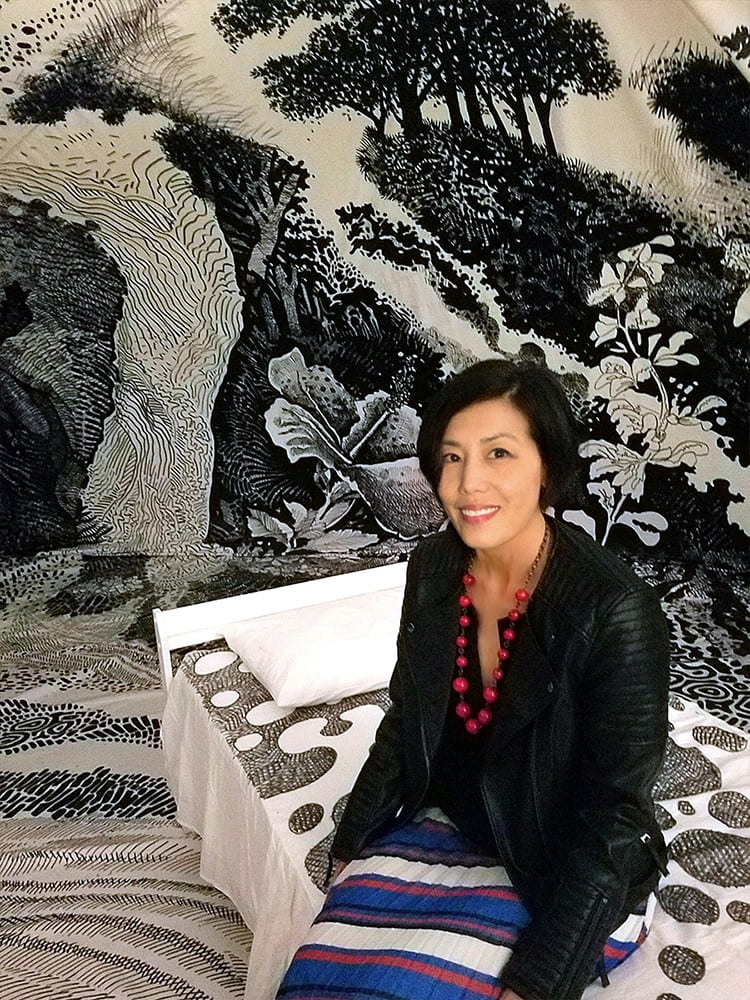
Member Name: Debbie Lee
Resident of: Los Angeles
Number of years as a USC PAM member: 4
When was the first time that you visited the USC Pacific Asia Museum?
I first visited the museum on October 14, 2011 to meet with a curator
What made you decide to become a Member of the USC Pacific Asia Museum?
As a graphic designer, I had already been partnering with PAM for a few years. I was really impressed with the quality and importance of the work the museum was doing, and felt it was necessary to support it as a member.
What benefit of Membership do you appreciate the most and why?
I really appreciate the many free family events that USC PAM offers so that everyone can come and enjoy this unique space that highlights Asian art and promotes cultural understanding. We have not only attended the Lunar New Year Festival every year, but my older son has also participated as a performer.
Are there particular artworks, galleries, or special exhibitions that are inspiring to you?
There are too many to name: Oscar Oiwa (paintings and immersive experience), Ikko Tanaka (graphic arts), Gajin Fujita (paintings), Takashi Tomo-Oka (photography), Tibetan Sand Mandala.
I think what all of these have in common is a link between traditional forms, techniques and sensibilities with contemporary expression and experiences. We can still gain an appreciation of traditional art forms and methods while making them relevant to our daily lives and current events. I think USC PAM’s vision outlines it succinctly: …we celebrate the past but also summon the courage to envision a new future, where visitors can see…dynamic art exhibitions that launch artists and…[provide]…our Pacific Asian community for more representation in the contemporary art world and in our public discourse.
Why do you feel art is important—for yourself, other individuals, families, communities?
My boys are now 14 and 10 years old and have essentially grown up visiting USC PAM on a regular basis. I feel so fortunate to have this local resource for arts, culture and community connection. They can learn about their Chinese heritage in addition to the other rich and diverse cultures of Asia and the Pacific Islands. Cultural understanding is more important than ever, and sharing your voice and your perspective whether through art, words or action is imperative to bringing people together.
During the stay at home order, many of us are discovering the benefits of creative outlets — like trying out new hobbies, baking, exercising, or listening to music. What is keeping you motivated right now?
I’m doing all of the above to try and maintain some sanity in our current world of uncertainty. My main motivation is taking care of my family. I want my kids to know that we are all in this together, that we need to practice empathy and kindness to others. We must take care of ourselves and each other. That might mean preparing a meal together, making sure we get daily exercise, volunteering at a food bank, playing a game or watching a movie together, taking an online class, staying engaged and being politically active by attending a socially-distanced protest. I also want them to know it’s okay to be bored, to be depressed, to make mistakes, but to find healthy outlets and know that we are here for them. We try to find ways to have fun and laugh despite being separated from friends and family.
What do you envision for the USC Pacific Asia Museum in the years to come?
I am grateful for the educational outreach programs that USC PAM has with local schools. Exposure to art and history is so important to share how we are all connected. Diversity strengthens communities. More education is needed to combat prejudices, stereotypes and systemic racism. I hope that PAM can continue to offer programs for children and families, and to expand partnerships with educational institutions.
August 2020:
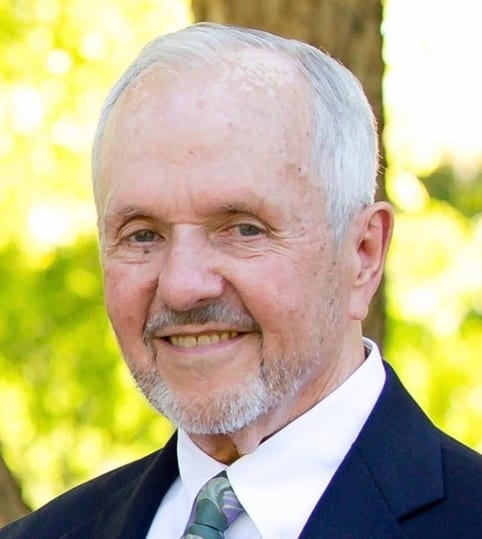
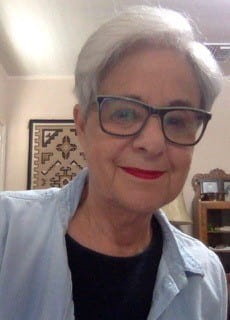
Member Names: Sheila and Don Watson
Residents of: Pasadena
Number of years as USC PAM members: 7
When was the first time that you visited the USC Pacific Asia Museum?
Sheila: I visited in the 90s, but got more interested after I retired. A friend was a docent and suggested I get involved in USC PAM.
Don: My first time visit was for the interview to be a Docent.
What made you decide to become a Member of the USC Pacific Asia Museum?
Sheila: I have been an avid museum-goer since elementary school. I grew up in New Jersey, close to New York City and loved the school field trips to the many museums in New York City. I knew absolutely nothing about Asian art, history and culture. After seeing the collection, I wanted to learn and broaden my knowledge.
Don: Being a Docent meant being a Member. Sheila had decided to become a Docent, and from her enthusiasm after going to the information session, I decided to join her in the class 0f 2014.
What benefit of Membership do you appreciate the most and why?
Sheila: The opening of each new exhibition is exciting. Members get to come prior to the general public. I enjoy the speakers related to the new exhibitions. As a member, I get regular notices of all special events.
Don: This gave me the opportunity to learn something new, the art of Asia and the Pacific Islands. I had no background before taking the training, and this matched my enjoyment of doing research.
Are there particular artworks, galleries, or special exhibitions that are inspiring to you?
Sheila: It’s hard to choose. When I attend a lecture or do my own research and learn about a region or an artwork, that becomes my favorite. Once I know the story behind the object, it comes alive for me.
Don: My favorite exhibition was Royal Taste (in 2016), which gave me insights into how beliefs and values are shared though trade by ship, not just along the land routes of the Silk Road. The introduction of exhibitions by current artists, whether they are producing modern or traditional pieces, helps me appreciate the creation of art, and how artists are inspired.
Why do you feel art is important—for yourself, other individuals, families, communities?
Sheila: The artifacts in the USC PAM collection are a window into the history, values, beliefs and culture of Asia and the Pacific Islands. Throughout history, people of all cultures were compelled to decorate and add personal touches to whatever they created.
Don: Even the simplest artifacts of daily life are more interesting if they are uniquely shaped, decorated or colored. The best artists are inspired to make the finest quality of objects and to continue to upgrade their skills, and sometimes try new techniques. The production and appreciation of art helps develop well-rounded and more interesting people.
During the stay at home order, many of us are discovering the benefits of creative outlets — like trying out new hobbies, baking, exercising, or listening to music. What is keeping you motivated right now?
Sheila: As a USC PAM docent, we meet regularly on Zoom and continue sharing research on the collection. I have also done jigsaw puzzles and play on-line mahjong with friends.
Don: We are walking each morning and I am taking advantage of this time we have been given to work on the genealogical studies of my family history, which I can now trace back to the 1300’s in England and Scotland. Ancestors helped found the Jamestown Colony and the Plymouth Colony, and fought on both sides of the Civil War. I am starting each day with a few hours of reading, and am currently focusing on the history of our country, particularly at it relates to slavery, and the tensions that continue to this day. I am also baking carrot bread and banana bread.
What do you envision for the USC Pacific Asia Museum in the years to come?
Sheila: I have heard there will be improvements in the Silk Road Gallery. I believe we will have more interactive exhibits and feature more contemporary artists along with our historic artifacts.
Don: As a Docent who has done research on the history of USC PAM, including building and the garden, I am hoping the work on developing a special building and garden tour will come to fruition after the pandemic is over. The focus on inclusiveness is inspiring, and I appreciate what our staff leadership is doing to attract and inspire art in the lives of our diverse community.
July 2020:
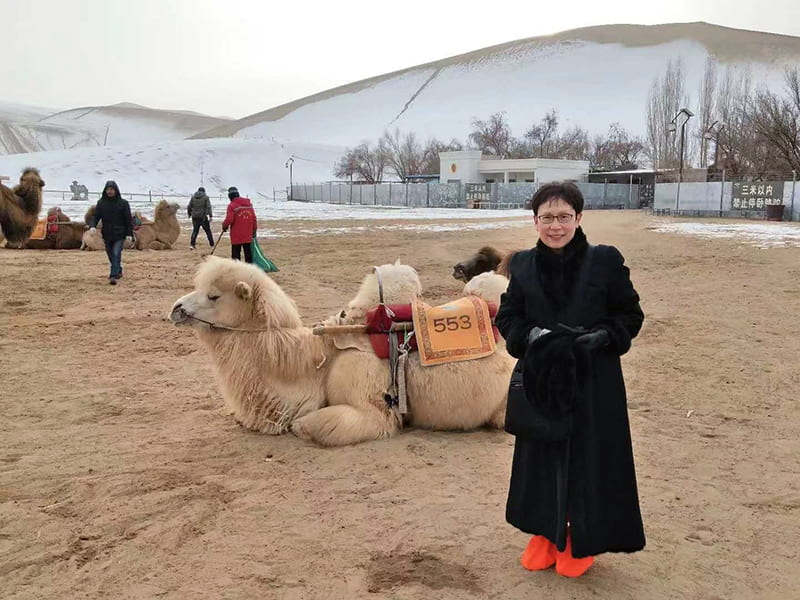
Member Name: June Li
Residence: Pasadena
Number of years as a USC PAM member: 25 years
When was the first time that you visited the USC Pacific Asia Museum?
I first visited the museum in the 1990s. After moving from Philadelphia, I was advised to look up David Kamansky, who was then the director of the Pacific Asia Museum. Learning that I studied Chinese art in graduate school and interned at a museum before coming to Los Angeles, David was extremely welcoming and showed me the museum, discussing many facets of its collection.
What made you decide to become a Member of the USC Pacific Asia Museum?
When we moved to Los Angeles, we settled in Pasadena. I was interested in supporting the local community, especially when I spent each day away from Pasadena since I worked at the Los Angeles County Museum of Art. The museum’s Docents had kindly included me in their education/study program in the 1990s. Delores Bremner, who passed away a few years ago, was a serious scholar and docent at the museum, as well as a friend of ours. One of her projects each year included a lecture series for docent training focused on Chinese and Japanese art, archaeology, and other topics relevant to the museum’s collection. I had the honor to be one of the speakers for several years. In this way, I became familiar with the museum’s programs. At the same time, I took weekly painting classes with a great gongbi (fineline) painter, Mr. Liu Ponong and his wife Wen-yen, at the museum.
What benefit of Membership do you appreciate the most and why?
Membership allows me to visit the museum (well, before Covid; and I’m sure after this unusual time of social distancing) at any time to see special exhibitions as well as objects and paintings from the permanent collection. There are also special exhibition openings and events that are always intimate and fun.
Are there particular artworks, galleries, or special exhibitions that are inspiring to you?
I am hugely impressed by the large collection of Chinese textiles and costumes, and the good range of Chinese and Southeast Asian ceramics in the museum’s holdings. The ceramics in particular form a wonderful teaching tool for students and anyone interested in porcelain and pottery. The broad coverage of regions and ceramic types allow for comparisons of wares from China, to Thailand, Vietnam, and Cambodia, etc., making for an enviable study collection. A memorable exhibition was PAM’s participation in the Getty funded Pacific Standard Time a few years ago. It recreated the legendary curator Walter Hopp’s 1963 exhibition of Marcel Duchamp’s work at the then Pasadena Art Museum. It was eye opening to learn that the museum was the site of the unveiling of an icon of modern art. In addition, the more recent “reconstruction” of Grace Nicholson’s room in the museum galleries was intriguing and provides a nice introduction to the origins of the museum buildings and grounds.
Why do you feel art is important—for yourself, other individuals, families, and communities?
Art is the expression of cultures. It is varied, diverse, and creative. It allows for innovations, imagination, and sharing. So, art is an individual as well as collective expression and experience. It is a way for all of us in this world to connect and learn about each other. The importance of art and the humanities cannot be overstated.
During the stay at home order, many of us are discovering the benefits of creative outlets — like trying out new hobbies, baking, exercising, or listening to music. What is keeping you motivated right now?
As with most of our friends, we are lucky to have “free time” these days with the stay at home orders. This enforced retreat has allowed time to relearn certain things began in childhood such as playing the piano, reading Classical Chinese, and practicing Chinese calligraphy. These oppressive tasks have transformed into comforting challenges today. And yes, there is time to try out recipes and learn from the many online webinars and museum tours, and music performances. Sometimes the choices are overwhelming.
What do you envision for the USC Pacific Asia Museum in the years to come?
I look forward to seeing the museum grow into a vital educational museum with its wonderful collections from around the Pacific rim and its association with USC.